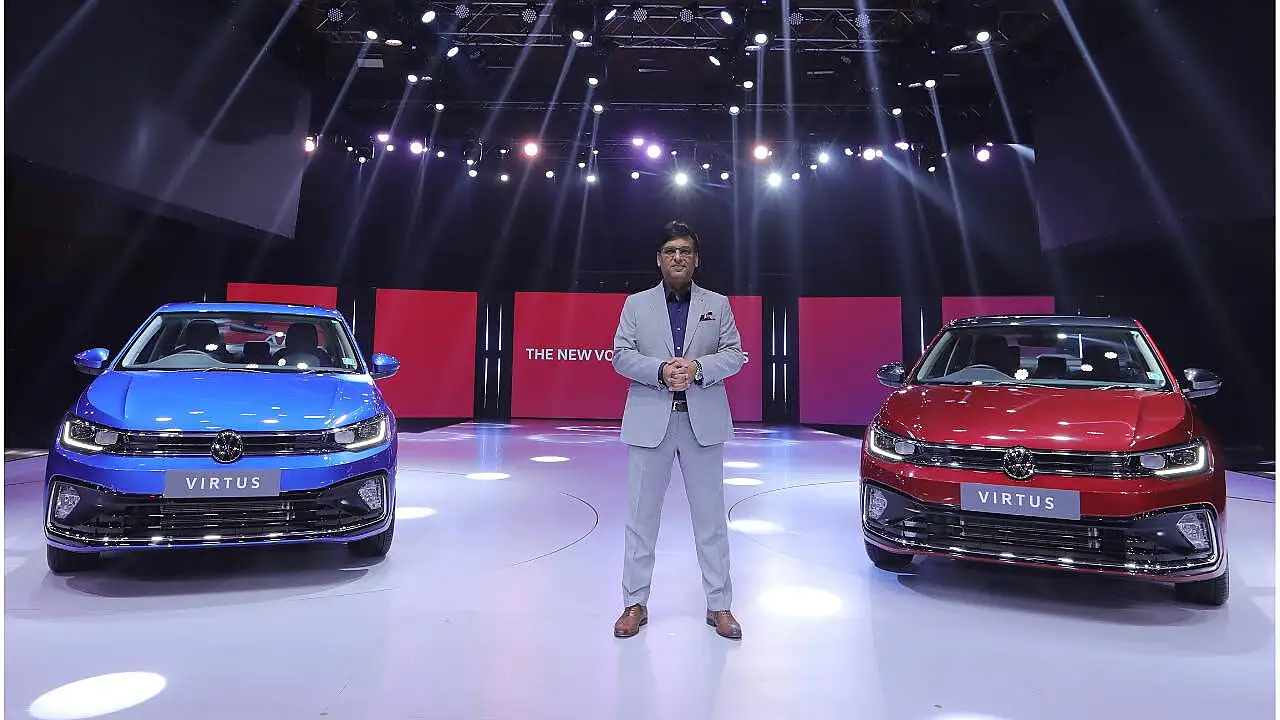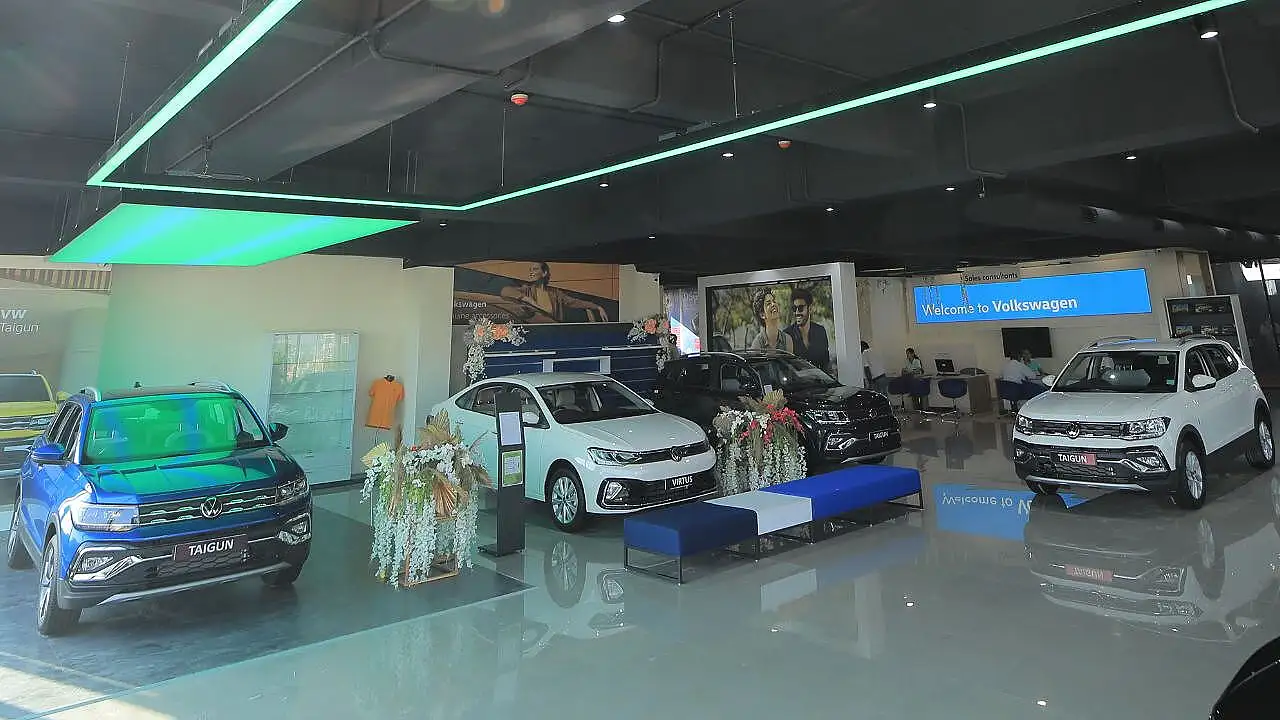
As Brand Director of Volkswagen Passenger Cars India, Ashish Gupta has every reason to be pleased with customer response to the Taigun and Virtus.
Yet, he cautions that there is no room for complacency as the journey has just begun with a lot of work still ahead. “Brand positioning is the priority and we want to build on the success of India 2.0, which is already underway with Taigun and Virtus,” says Gupta.
The key, therefore, is to “up the premium game” where more products should ideally come in from VW’s global portfolio before transiting to electric as part of the overall strategy. “I am looking at a five year timeframe to take the brand higher and make it aligned closer globally,” he adds.
India 2.0 is the rebooted initiative for the subcontinent where the VW group has entrusted Skoda Auto with the lead responsibility of developing products jointly for the brands on the all-new MQB platform. Thus far, there have been two each in the form of the Skoda Kushaq and Slavia, while VW has the Taigun and Virtus.
“Clearly, our customers and dealers have a more positive attitude towards VW where the new offerings have certainly helped along with a different visual language and brand design,” says Gupta. The overall feel at outlets is now more vibrant along with a greater focus on TCO (total cost of ownership). While there has also been a “lot of communication efforts”, he admits that all this takes time… “it is a journey and customers need to feel the change.”
Consistency Is Key
Plans and measures are in place but “we need to deliver consistently” and that remains the biggest challenge. “We can put money to advertise and communicate but the people at the ground have to do their bit and reach out to customers,” reiterates Gupta.
It has also been more than apparent over the last few years that the passenger car growth story is coming in more forcefully from Tier 2/3 regions. This is not entirely surprising with big metros choked to the hilt in terms of parking space and road traffic. “On the other hand, the share of wallet and space is much more in Tier 2/3 centres and that is where every industry is growing,” he says.
According to Gupta, it is now a question of aspiration for car buyers and they are in a better position to do so thanks to more global travel coupled with higher degrees of affluence. He cites the penetration of cellphones as a case in point where people understand features and follow global trends very carefully.
Changing Customer Profile
Even in the used car space — which is the first point for a two-wheeler rider — customers are opting for younger and safer cars. They look for 3-5-year-old models that are not easily available unlike older options, which are over six years old and more accessible on contrast albeit with fewer takers. All this puts in perspective why the used car market is booming but only for contemporary offerings.
From Gupta’s point of view, the India 2.0 initiative could not have kicked in a better time for VW. It was quite apparent even during its conceptualisation that customer preferences in the country were changing towards more premium cars at higher price points and better features with safety emerging a top priority.

As he puts it, these preferences along with regulations have pushed the transaction price by nearly 15% in three years. This is borne by the fact that 40% of cars sold in the last 7-8 months are over INR 10 lakh, which marks a big jump from just 18% four years ago. The transition from BS4 to BS6 emission norms also increased vehicle price tags but the bottomline is that “customers see the value of added features”.
Before India 2.0, VW was present with the Polo and the transaction price was in the range of INR 6-9 lakh, which is in sharp contrast to the new portfolio whose average ticket price is INR 15 lakh.
“We had to move VW in India to the global positioning that it deserves. The brand is targeting the aspirational middle class, which is the fastest growing segment and the cars we have sold with India 2.0 are drawing these customers,” says Gupta.
Today, 50% of car buyers in India are in the age group of 35-37, while it is nearly 50 years in the case of Europe. Customers here are also younger than their counterparts in Brazil and South Africa.
Booming Youth Power
“This is the demographic benefit India is reaping and this is the class of customers that is growing. The meat of the market will be the 35-40 age group for the next decade even with different income levels,” he elaborates.
Gupta is also confident that the SUV momentum would continue in the coming years. By the end of this decade, they are expected to account for nearly 55% of the market with hatchbacks taking up 35% and sedans making up the balance.
Even while the market is firing on all cylinders right now, Gupta believes things could have been better especially “if we did not have these supply issues right at the time of launch”. The reference is to the chip shortage crisis compounded by a host of other factors that wreaked havoc across the global supply chain.

“It is very important to get that momentum into the market to be able to meet demand right at the onset of a launch,” he explains. Ideally, the “launch plus three months” period is critical where demand should be satiated at any cost. This is where the chip crisis played spoilsport just not in India but across the world.
Supply Chain Woes
It is not as if things are hunky-dory right now — on the other hand, the situation has not settled down to desired levels. “We are optimists as sales people and things have definitely improved with visibility now up to six weeks from three weeks earlier. However, in an ideal market situation or sales cycle, you need 12-18 weeks to plan and match your sales/variant mix with demand,” says Gupta.
Being a globally integrated company, a lot of VW’s supply chains have linkages to the world. The India 2.0 project and 95% localisation “means we are insulated a little bit from global volatility” but if there is a chip shortage that affects the infotainment system, it can be quite a blow.
“You may have a Plan B, C right up to F or G to handle the supply side and look for alternative chips or parts. However, you need to adapt your systems and hardware/ software/ functionalities to the new components, which takes time,” continues Gupta.
Infotainment systems for the Taigun and Virtus have been a major bottleneck for the last one-and-a-half years both in India and overseas, where supplies are 40% of what they should have been. One option was to look for different parts or shift the total assembly infotainment system to another (system).
Coping With Complexities
That, however, “has its own complexities” because it is an integrated part of the dashboard and a change would call for renewed crash testing, revalidation of safety and so on. “One cannot play around with car systems. Over the last year-and-a-half, we have made adjustments in our features,” he adds.

Beyond infotainment systems, there was one month when VW did not have chips for its outside rearview mirrors and had to supply cars into the market without the auto fold functionality. “However, we were absolutely transparent with our customers. It is still better to supply cars than nothing at all!” says Gupta.
It was also not as if the closure of Russia meant more attention would be given to India since VW is a huge global brand with sales of over six million units a year. Equally, being in a joint programme with Skoda does not imply that everything can be shared without a fuss.
On the contrary, there are certain parts which are specific like the infotainment system for the Taigun and Kushaq, where the latter has a standalone unit while VW’s is inbuilt into the dashboard. “Hence even while the platform is common, design and development is brand-specific, including the interiors. That is how customers perceive differentiation to justify the price,” says Gupta.
Leasing Used Cars
Moving on to other trends in the industry, he is of the view that subscriptions and leasing models will continue even though the pandemic has fuelled the drive towards ownership. VW is now exploring the option of leasing and subscription models for used cars in India. This makes sense as new car subscriptions are barely for six months and used cars could end up being a better option as is the case globally too.
As part of its interest in electric, VW is testing the ID.4 GTX in India and evaluating options even though there are no plans of an immediate launch happening. As Gupta says, VW “wants to be the leader in electric and sustainability”, which means India will be part of this initiative eventually. “Finally it is about being aligned globally,” he adds.
The conversation veers around the Polo, which pretty much defined VW for so long in India. The platform has been phased out globally and it was important for the group to keep in sync with the times in terms of technology and features.
Polo Memories
The global Polo is more than four metres long and this is what customers would have wanted and not a reengineered sub-four metre option to make it more affordable for India. The global offering would have cost much more and not made a good business case especially with India 2.0 now becoming critical to the future.
However, the Polo is roaring in the used car space and its resale price has gone up by 6% since production stopped. Today, there is a premium of INR 1 lakh on the Polo GT, which is a tribute to a brand that has bid adieu to India.
Also Read:
VW Taigun: Worthy Challenger Among Compact SUVs